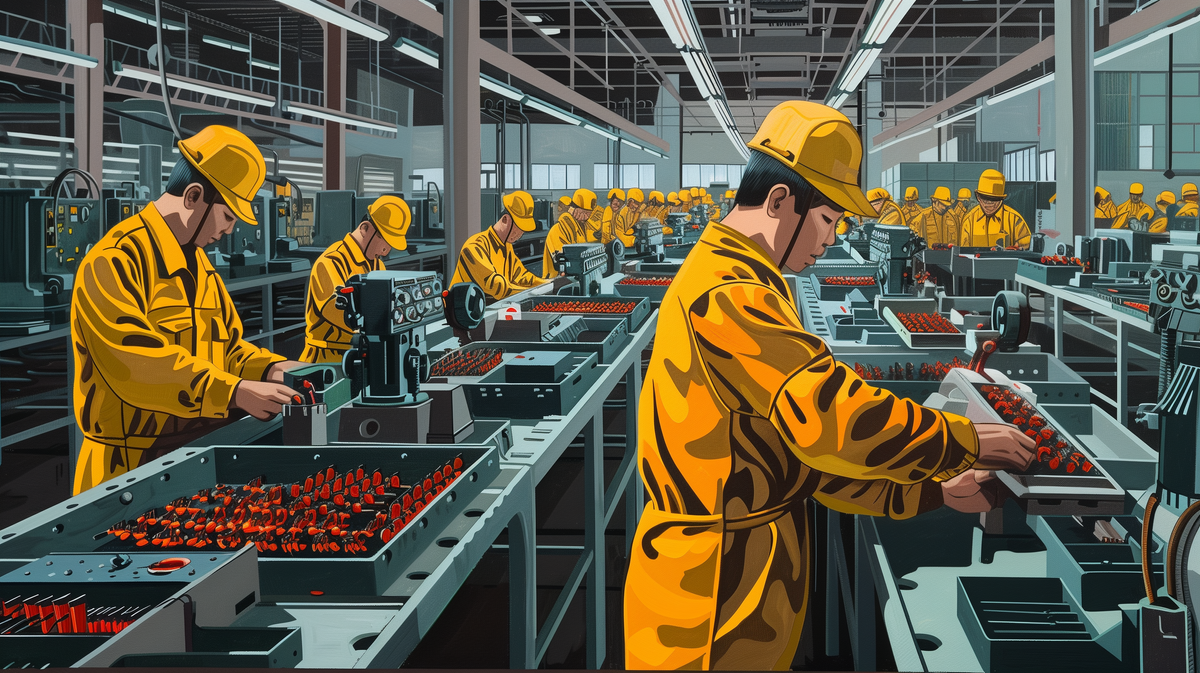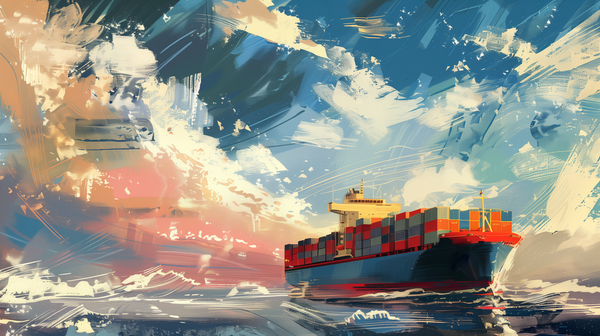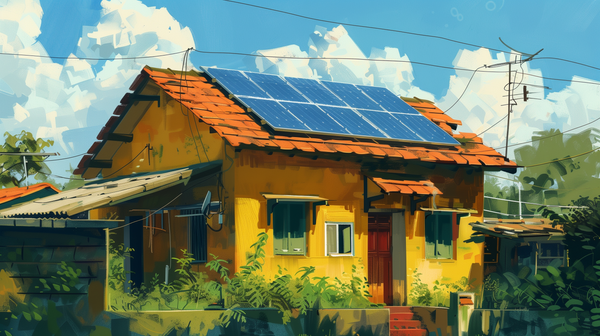Factories of Progress: Why "the poor have walked off the land into the factories as fast as the factories could take them."

The introduction of factory manufacturing in the developing world changed the lives of more than a billion people, and in doing so, it helped to lift an entire continent out of extreme poverty. Factories in developing countries are often portrayed as involuntary labor camps at worst and as centers of coercive employment at best. Hot, dark, dangerous, a wholly unwelcoming place where workers are conscripted against their interests to toil for the betterment of Western civilization.
While this picture of the factory may seem temptingly intuitive, it is far from an accurate picture of modern industrialization and manufacturing in low—and middle-income countries. For over fifty years, the factory has provided an escape from the crushing immiseration and unfathomable drudgery of subsistence farming.
Subsistence farming in low-and middle-income countries is by no means an agrarian utopia; areas of the world where a large proportion of the population remains engaged in small-scale farming are still the poorest places on earth today. Rather than a back-to-nature, organic paradise, subsistence farming is an exhausting, dangerous, ultra-low-income, hand-to-mouth existence that is literally backbreaking. Families who work these small farms all too often cannot afford an education or medical care for their children and suffer extremely low standards of living. They live one failed harvest away from serious economic stress, hunger, and hardship, with no financial safety net.
The factories many Westerners view as engines of oppression are, in fact, prime movers in driving up standards of living for the world’s poor. While factories are an intermediary step for most countries on the path to prosperity, they are obviously not without fault. Factory work has historically been dangerous and laborious work, undertaken in long shifts, usually six days a week. Factories have conscripted children, exploited workers, and failed to ensure the health and safety of those who labor within them and have all too often caused significant local environmental damage. While conditions have improved in nearly all factories, these issues remain to varying degrees in the developing world.
What we can say, however, with historical certainty, is that on the whole, factories and industrialization tend to bring improved economic opportunity, higher living standards, lower child mortality, and increased life expectancy.
Over the last fifty years, the women, men, and children who staff these factories have left the countryside and their farms by the millions, seeing improved economic opportunity and a more prosperous and abundant life. For those of us living in the richest developed nations, the idea of factories and industrialization bringing prosperity feels alien and unsettling, and this has been the case since the center of manufacturing shifted from West to East.
C.P Snow wrote of our collective attitude towards industrialization in the developing world in his 1959 essay The Two Cultures - “It is all very well for one, as a personal choice, to reject industrialization—do a modern Walden, if you like, and if you go without much food, see most of your children die in infancy, despise the comforts of literacy, accept twenty years off your own life, then I respect you for the strength of your aesthetic revulsion. But I don't respect you in the slightest if, even passively, you try to impose the same choice on others who are not free to choose. In fact, we know what their choice would be. For, with singular unanimity, in any country where they have had the chance, the poor have walked off the land into the factories as fast as the factories could take them.”
Improved quality of life and economic opportunity climbed in lockstep with industrialization across China, as millions of rural Chinese rejected subsistence farming, left the land, and moved into the cities to undertake manufacturing work. Between 1980 and 2019, GDP per capita in China climbed from $1,110 to $17,100, while average life expectancy gained 11.6 years, from 65.9 years to 77.5 years. The improvements in life expectancy were not due principally to adult Chinese living longer, but in large majority to far fewer children dying young. Unprecedented economic growth on a national scale and increased economic opportunity on the individual scale created the wealth required to provide tens of millions of children a better, healthier, safer, and longer-lived life. Manufacturing’s positive influence on economic opportunity and living standards isn’t restricted to China. As manufacturing spreads through India, Southeast Asia, and Africa, it brings with it a measure of prosperity and abundance that could not be supported by subsistence agriculture.
Globalization and largely unrestricted trade have allowed for the greatest drop in extreme poverty in the history of civilization. Starting at the dawn of the Industrial Revolution, global extreme poverty steadily decreased from 89% in 1820 to 63% in 1950. As globalization took hold in earnest in the post-World War II era, many countries began trading more intensively and manufacturing for each other; this helped drive down global extreme poverty further. Between 1950 and 2020, global extreme poverty was reduced dramatically, from 63% to >10%.
Unfortunately, 2018 through 2020 has seen the burgeoning of a broader movement of economic protectionism and strong political hostilities toward free trade and globalization. Trade and globalization have been extremely powerful forces in driving global prosperity, abundance, stability, and security. Policies and political positions that work against trade and globalization risk jeopardizing hard-won improvements in the living standards for people in low- and middle-income countries. Countries with extensive bi-directional trade tend to be much less likely to engage in war, supporting a freer and more prosperous population, and we need to keep this in mind when we propose throwing up economic barriers to global trade.
Globalization, ubiquitous, largely free trade, and the factories that help bring economic growth, prosperity, and improved living standards are by no means a guaranteed state of civilization. The aggressive trade wars that started in 2018 and a growing push towards economic protectionism, barriers to trade, and increasing political hardening between some countries threaten to derail economic development in a number of countries in 2020.
We are at a pivotal time in history; manufacturing and industrialization have lifted billions of people from extreme poverty and provided unprecedented economic opportunity. The great enrichment that began with the Industrial Revolution has yet to be completed, but now is the time for people and governments to ensure the policies they draft and deploy are policies that encourage capitalism, trade, globalization, cooperation, and prosperity.
Policies that hinder globalization and reduce trade, are policies that decrease global prosperity, kill factories, and increase global poverty. The implementation of such policies should be avoided so far as is reasonably practical. Factories, trade, and globalization uplift the impoverished and help build low-and-middle-income countries. Let’s ensure we don’t retract these powerful forces for human progress.
If you’re interested in learning more, the author recommends More: The 10,000-Year Rise of the World Economy Book by Philip Coggan, 2020.





